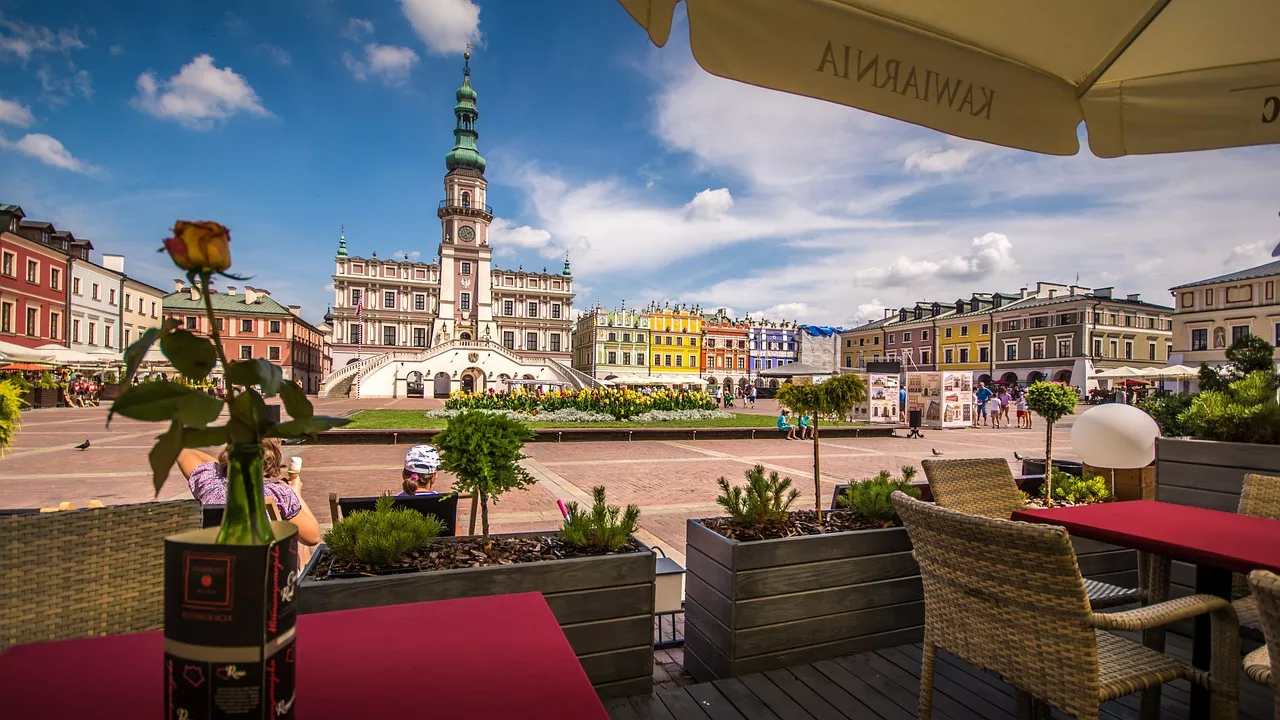The History and Influence of European Cuisine
Europe has long been hailed as the culinary capital of the world, with a rich history that has shaped the way we eat today. The continent's diverse geography, trade routes, and cultural exchanges have all played a significant role in the development of its unique food culture. From the ancient Greeks and Romans who introduced olive oil, wine, and bread, to the medieval feasts of the nobility, European cuisine has evolved over centuries, blending influences from various regions and civilizations. The introduction of new ingredients, spices, and cooking techniques brought by explorers and colonizers further enriched European cuisine, giving birth to iconic dishes that are still enjoyed today. Whether it's the French culinary tradition of haute cuisine or the hearty comfort food of Eastern Europe, Europe's food culture is a testament to its rich history and diverse heritage.
European cuisine has also had a profound influence on global gastronomy. From the classic French techniques that form the foundation of modern cooking to the Italian passion for simplicity and quality ingredients, European culinary traditions have been adopted and adapted by chefs around the world. The concept of the restaurant, as we know it today, originated in France, and European flavors and cooking styles can be found in menus from New York to Tokyo. European cuisine has become a global benchmark for excellence, with its emphasis on quality, tradition, and innovation inspiring chefs and food lovers worldwide.
Famous European Dishes and Their Origins
European cuisine is synonymous with iconic dishes that have become staples in culinary establishments worldwide. From the creamy, buttery sauces of French cuisine to the savory sausages of Germany, these dishes embody the essence of their respective countries and are a must-try for any food enthusiast.
One such dish is the quintessentially French Coq au Vin. This slow-cooked chicken stew, flavored with red wine, mushrooms, and onions, originated in rural France and has since become a symbol of French gastronomy. Its rich flavors and tender meat make it a favorite among locals and visitors alike.
Germany is known for its hearty sausages, and the bratwurst is perhaps the most famous of them all. Made from a blend of pork, beef, or veal, seasoned with spices, and traditionally served with sauerkraut and mustard, the bratwurst is a staple at German street festivals and beer gardens. Its smoky, savory taste is a true delight for meat lovers.
Italy, on the other hand, is celebrated for its pasta dishes, and none is more beloved than the classic Spaghetti Bolognese. Contrary to popular belief, Bolognese sauce is not a tomato-based sauce but a rich, meaty ragu made with ground beef, pancetta, onions, carrots, and celery. Served over al dente spaghetti, this dish is a testament to Italy's love affair with simple yet flavorful cooking.
These are just a few examples of the famous dishes that have become synonymous with European cuisine. Each country has its own culinary gems waiting to be discovered, each with a story to tell and a taste to savor.
Regional Specialties Across Europe
As we journey through Europe's food culture, it becomes evident that each region boasts its own unique specialties, reflecting the local ingredients, traditions, and cultural influences. From the Mediterranean flavors of Greece to the hearty cuisine of Scandinavia, let's explore some of the regional specialties that make European food culture so diverse and exciting.
In Spain, the region of Catalonia is known for its vibrant food scene, with dishes like Paella and Crema Catalana taking center stage. Paella, a rice dish flavored with saffron and a medley of seafood or meat, is a symbol of Spanish cuisine and a delight for the senses. Crema Catalana, a rich and creamy custard dessert topped with caramelized sugar, is the perfect way to end a traditional Spanish meal.
Moving east to Greece, we encounter the flavors of the Mediterranean. Greek cuisine is characterized by fresh, simple ingredients, with dishes like Moussaka and Tzatziki showcasing the country's culinary prowess. Moussaka, a layered casserole of eggplant, minced meat, and béchamel sauce, is a beloved comfort food that embodies the warmth and hospitality of Greece. Tzatziki, a yogurt and cucumber dip flavored with garlic and herbs, is a refreshing accompaniment to grilled meats and vegetables.
In Scandinavia, the focus is on hearty, wholesome dishes that provide sustenance during the long, cold winters. Swedish meatballs, served with lingonberry sauce and creamy mashed potatoes, are a classic example of Scandinavian comfort food. The delicate balance of flavors and the tender texture of the meatballs make them a true delight.
These are just a few examples of the regional specialties that await you on your gastronomic journey through Europe. From the sun-soaked shores of the Mediterranean to the snow-capped peaks of the Alps, each region has its own culinary treasures just waiting to be discovered.
Exploring the Vibrant Food Markets of Europe
No exploration of European food culture would be complete without a visit to the bustling food markets that dot the continent. These vibrant hubs of gastronomic delight offer a glimpse into the local food scene, showcasing the freshest produce, the most aromatic spices, and the most tantalizing treats.
In France, the Marché de Rungis is the largest wholesale food market in the world, covering an area of over 232 hectares. Here, you can find everything from fresh seafood and artisanal cheeses to seasonal fruits and vegetables, all sourced from local farmers and producers. The market is a feast for the senses, with the sights, sounds, and smells of French cuisine filling the air.
In Italy, the Mercato di San Lorenzo in Florence is a must-visit for any food lover. This bustling market is a treasure trove of Italian delicacies, from freshly baked bread and aromatic truffles to wheels of Parmigiano-Reggiano and bottles of Chianti. The market is a celebration of Italian culinary traditions and a testament to the country's passion for good food.
Moving north to Germany, the Viktualienmarkt in Munich is a food lover's paradise. This open-air market, located in the heart of the city, is a vibrant mix of traditional Bavarian specialties and international flavors. Here, you can sample bratwurst, pretzels, and sauerkraut, as well as indulge in fresh fruits, pastries, and cheeses from around the world. The market is a true reflection of Munich's rich food culture and a gathering place for locals and visitors alike.
These are just a few examples of the vibrant food markets that await you on your culinary journey through Europe. Whether you're looking to stock up on ingredients for a home-cooked meal or simply want to immerse yourself in the local food scene, these markets are a feast for the senses and an experience not to be missed.
Traditional Cooking Techniques and Ingredients in European Cuisine
European cuisine is steeped in tradition, with cooking techniques and ingredients that have been passed down through generations. From the art of French pastry-making to the age-old preservation methods of Nordic cuisine, these traditions are what give European dishes their distinct flavors and textures.
In France, the art of patisserie is taken very seriously. From delicate macarons to buttery croissants, French pastries are renowned for their lightness and finesse. The secret lies in the precise measurements, the quality of the ingredients, and the patience required to master the techniques. Bakers spend years perfecting their craft, ensuring that each pastry is a work of art as well as a delectable treat.
In Italy, pasta-making is considered an art form. From the kneading of the dough to the rolling and shaping, every step is done with care and precision. The choice of flour, the number of eggs, and the drying process all contribute to the final product. Italians take pride in their pasta, believing that it should have the perfect balance of texture and flavor, and that it should always be cooked al dente.
In Nordic countries, preserving food is a way of life. With long, harsh winters and limited access to fresh produce, preserving techniques such as smoking, salting, and fermenting have been developed to ensure a year-round food supply. Smoked fish, cured meats, and pickled vegetables are staples in Nordic cuisine, adding depth of flavor and preserving the essence of the ingredients.
These are just a few examples of the traditional cooking techniques and ingredients that have shaped European cuisine. Whether it's the precision of French cooking, the simplicity of Italian cuisine, or the resourcefulness of Nordic food preservation, these traditions are what make European dishes so special.
European Food Festivals and Events
Europe is home to a plethora of food festivals and events that celebrate the region's culinary heritage. From wine tastings in vineyards to truffle fairs in medieval towns, these events offer a unique opportunity to immerse yourself in the local food culture and indulge in a gastronomic feast.
One such event is the Oktoberfest in Munich, Germany. This world-famous beer festival attracts millions of visitors each year, who come to enjoy the traditional Bavarian beer, sausages, and pretzels. The festival is a celebration of German beer culture and a chance to experience the lively atmosphere of a true German beer garden.
In France, the Fête de la Gastronomie is a nationwide celebration of French cuisine, held every September. The festival showcases the diversity of French gastronomy, with events ranging from cooking demonstrations and tastings to food markets and street parties. It's a chance to discover new flavors, meet passionate chefs, and immerse yourself in the art of French cooking.
Italy is known for its love of food and wine, and the VinItaly festival in Verona is the ultimate celebration of Italian wines. Held annually, the festival brings together winemakers, wine enthusiasts, and industry professionals from around the world. It's a chance to taste a wide variety of Italian wines, learn about the different regions and grape varieties, and discover the rich heritage of Italian winemaking.
These are just a few examples of the food festivals and events that take place throughout Europe. Whether you're a wine connoisseur, a cheese lover, or simply someone who appreciates good food, these events offer a unique opportunity to indulge your senses and celebrate Europe's rich culinary traditions.
Michelin-Starred Restaurants and Fine Dining Experiences in Europe
For those seeking the ultimate gastronomic experience, Europe is home to some of the world's finest restaurants. From Michelin-starred establishments to hidden gems tucked away in cobblestone streets, there's no shortage of options for food enthusiasts seeking a truly memorable dining experience.
France, with its long-standing culinary tradition, is home to many Michelin-starred restaurants. From the three-starred Alain Ducasse au Plaza Athénée in Paris to the two-starred Bras in Laguiole, these establishments offer a culinary journey like no other. Each dish is a work of art, meticulously prepared using the finest ingredients and presented with precision and elegance. Dining at a Michelin-starred restaurant in France is a true feast for the senses and an experience that will stay with you for a lifetime.
Italy, too, boasts its fair share of Michelin-starred restaurants. From the three-starred Osteria Francescana in Modena to the two-starred Piazza Duomo in Alba, these establishments showcase the best of Italian cuisine. Each dish is a celebration of the country's culinary heritage, with flavors that are both familiar and surprising. Dining at a Michelin-starred restaurant in Italy is a chance to experience the passion and creativity of some of the world's most talented chefs.
Moving north to Spain, the country's vibrant food scene has earned it numerous Michelin stars. From the three-starred El Celler de Can Roca in Girona to the two-starred Mugaritz in San Sebastian, these restaurants offer a modern take on traditional Spanish cuisine. Each dish is a fusion of flavors and textures, combining traditional ingredients with innovative techniques. Dining at a Michelin-starred restaurant in Spain is a journey through the country's culinary landscape, a chance to taste the best of what this diverse country has to offer.
These are just a few examples of the Michelin-starred restaurants and fine dining experiences that await you in Europe. Whether you're celebrating a special occasion or simply want to indulge in a truly unforgettable meal, these establishments will take you on a culinary journey like no other.
Hidden Gems and Local Food Experiences in Europe
While Michelin-starred restaurants offer a taste of Europe's finest culinary creations, there's something to be said for the hidden gems and local food experiences that can be found off the beaten path. From family-run trattorias to hole-in-the-wall bakeries, these establishments offer a glimpse into the heart and soul of European food culture.
In Portugal, the town of Nazaré is home to an unassuming seafood restaurant called A Tasquinha. This hidden gem is known for its fresh seafood dishes, including the famous percebes (goose barnacles) that are harvested from the nearby cliffs. The restaurant is a favorite among locals, who come here for the simple yet flavorful seafood

 From Fast Food to Farm-to-Table: Exploring the Diverse Food Culture in the United States
From Fast Food to Farm-to-Table: Exploring the Diverse Food Culture in the United States 8 Easy Desserts to Make
8 Easy Desserts to Make



